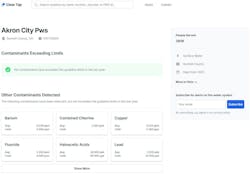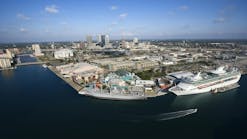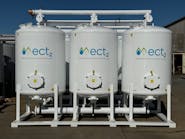From startup to solution: A fresh approach to water quality data
Software as a Service (Saas) has become a prominent model in the water industry over the years.
Jackson Geller originally took this model and applied it to the secondhand retailer market. He upgraded warehouses from pen-and-paper models to software-based systems, allowing them to easily track, price and sell products.
Through his success, Geller decided to purchase a home in D.C. last year. Over the summer, he had an HVAC technician out to diagnose problems with his air conditioning.
It was a hot day. The air conditioning was switched off for maintenance, and the technician asked Geller for a glass of water. So, he grabbed a glass and headed for the tap.
“Is that not filtered?” asked the technician.
“Yeah. Do I need to worry about that?” Geller responded.
“Yeah, I never drink D.C. tap water,” the technician said, “only filtered stuff.”
This brief exchange weighed on Geller and prompted him to do some research on tap water. He started to do some digging and discovered consumer confidence reports (CCRs) and was shocked to find that no one had aggregated them all.
Geller used his expertise in building software and databases and applied it to drinking water. He used new advancements in AI to compile data and make this project feasible. Previously, a project like this would have required vast amounts of human effort and time sitting behind a computer to extract data from PDFs.
“There’s a ton of infrastructure and regulation on drinking water,” said Geller, “yet for a large portion of the population water isn’t necessarily healthy to drink.”
Geller found that while there are solutions to treat drinking water at the tap, like filters, many people are not aware that they may need one.
A new water quality database
Geller ultimately landed on Clear Tap — a webpage-based database that allows its users to enter a name, location, zip code or public water system (PWS) ID to track water quality data in a specific area.
“The goal is to be the authority on water quality for every town in the USA,” Geller said.
Geller built the database by FOIA requesting roughly 1 million pages of CCR’s and used AI to pull the data, but it was not easy.
Michigan, for example, quoted him $50,000 for his request.
Throughout his data collection, Geller found issues with many of the CCRs. He found mistakes with units getting mixed up (ppm vs ppb), typos and missing contaminants.
“It is unclear if anyone is enforcing the correctness of CCR data,” Geller said. “State departments do a horrible job of record keeping.”
When requesting data, Geller heard numerous times that they were the first people to want the documents. Many departments had no idea where to look and had never digitized them — some did not have documents at all.
Geller was flooded with a variety of media formats when receiving his FOIA requests. Everything from Outlook emails, PowerPoints, PDFs, and even sticky notes. This made it challenging to compile the data.
“It was really difficult to deal with all the different forms of media that people report this in, and trying to get the data out in a reliable way,” Geller said.
Geller investigated U.S. Environmental Protection Agency (EPA) reporting to find that it collects drinking water data every six years — not comprehensive enough for his liking.
“There are sites out there that show data if you type in your zip code or address, but I was shocked to find that it was all outdated,” Geller said. “If it is outdated it is not helpful.”
What’s next?
Geller is working on getting a more comprehensive list of contaminants on the site. Ultimately, he would like to start working with public water systems to gather more data so consumers can be better informed on what is in their drinking water.
Geller believes that there needs to be a way to plug in a zip code to get accurate readings on drinking water quality. Ultimately, he wants to learn more about how the lab testing process works. He envisions a future where water quality data can be input directly into the website from lab tests and public water systems, and have it displayed directly to consumers.
“I believe that you can have the biggest impact by bringing the latest technology to industries that haven’t had much innovation,” Geller said





